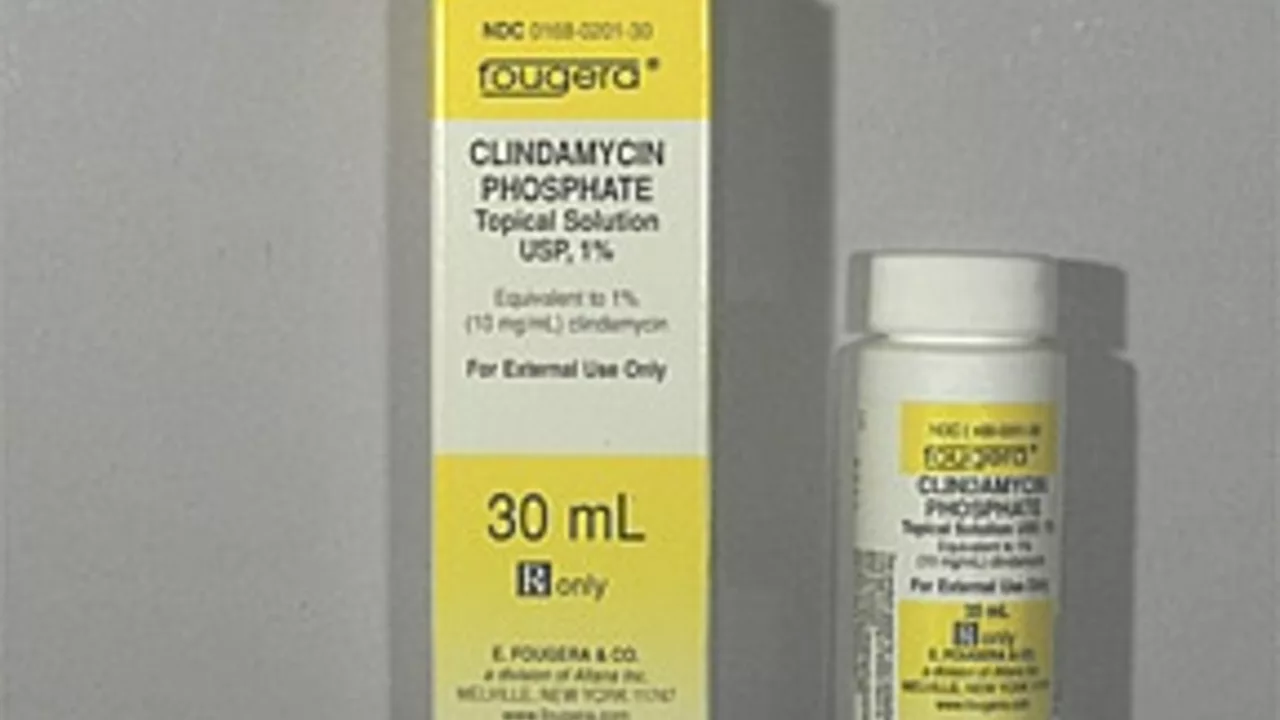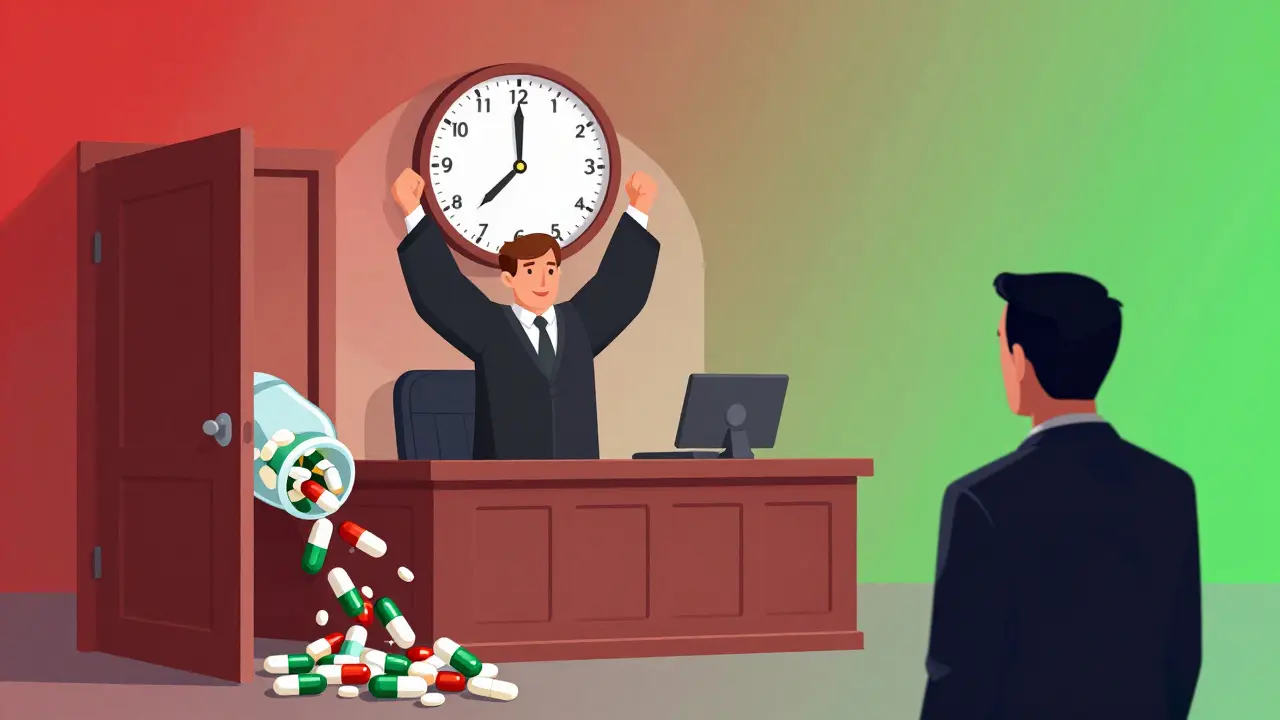Understanding Clindamycin Phosphate: An Overview
Before we delve into the side effects of Clindamycin Phosphate, it's important to understand what it is and why it's used. Clindamycin Phosphate is a type of antibiotic that's often prescribed to treat severe infections caused by bacteria. It's a derivative of lincomycin, and it's particularly effective against certain types of bacteria such as Staphylococcus aureus and Streptococcus pneumoniae.
While it's a potent antibiotic, it's not without its side effects. Some people tolerate Clindamycin Phosphate well, while others may experience various side effects. Let's take a closer look at what these side effects are, and what you can do to manage them.
Common Side Effects of Clindamycin Phosphate
Like all medications, Clindamycin Phosphate can cause side effects. These can range from mild to severe, and not everyone who takes the medication will experience them.
The most common side effects include nausea, vomiting, stomach pain, and diarrhea. These side effects are usually mild and go away on their own as your body adjusts to the medication. However, if any of these symptoms persist or worsen, it's important to seek medical attention promptly.
Severe Side Effects of Clindamycin Phosphate
While most people will only experience mild side effects, there are some severe side effects that can occur with Clindamycin Phosphate. These include severe stomach cramps, bloody or watery diarrhea, and signs of a serious allergic reaction such as rash, itching, swelling, severe dizziness, and trouble breathing.
If you experience any of these side effects, it's crucial to seek immediate medical attention. These symptoms could be a sign of a more serious condition known as Clostridium difficile-associated diarrhea, which can be life-threatening.
Drug Interactions with Clindamycin Phosphate
Another important aspect to consider when taking Clindamycin Phosphate is the potential for drug interactions. Some medications can interact with Clindamycin Phosphate, altering its effectiveness or increasing your risk of side effects.
For instance, certain live bacterial vaccines (such as typhoid vaccine) should not be taken while you are taking Clindamycin Phosphate. It's important to tell your doctor about all the medications you're currently taking, including prescription drugs, over-the-counter medications, vitamins, and herbal supplements.
Preventing and Managing Side Effects
While you can't completely avoid the possibility of side effects with Clindamycin Phosphate, there are steps you can take to minimize their impact and manage them effectively. For instance, taking the medication with food can help to minimize gastrointestinal side effects.
If you experience severe or persistent side effects, your doctor may suggest adjusting your dose, switching to a different antibiotic, or prescribing additional medications to help manage your symptoms. Never attempt to manage side effects on your own without consulting a healthcare professional.
Understanding the Risks and Benefits
With any medication, it's important to weigh the potential benefits against the potential risks. While Clindamycin Phosphate can cause side effects, it's also a highly effective treatment for serious bacterial infections.
Before beginning treatment with Clindamycin Phosphate, discuss the potential risks and benefits with your doctor. They can help you make an informed decision about whether this medication is right for you.
Conclusion: Clindamycin Phosphate Side Effects
In conclusion, while Clindamycin Phosphate can cause side effects, many of these are mild and temporary. Severe side effects are less common, but can be serious if they occur. With careful management and regular communication with your healthcare provider, most people can use Clindamycin Phosphate safely and effectively.
Remember, everyone's experience with medication is different, and what works for one person may not work for another. Always consult with your healthcare provider before starting any new medication, and report any side effects promptly.










Rica J
July 26, 2023 AT 18:23Just a heads up, teak it with food to dodge the upset stomach.
Linda Stephenson
July 26, 2023 AT 21:33Adding to that, consuming it alongside a balanced meal can really help smooth out those GI issues. It also gives your body a steadier absorption rate, which means the antibiotic can work more efficiently. If you’re prone to nausea, try a light snack rather than a heavy greasy bite. Some folks find a probiotic yogurt helpful after the dose to keep the gut flora in check. Remember, staying hydrated is key, especially if you experience any mild diarrhea.
Sunthar Sinnathamby
July 28, 2023 AT 01:20Listen, if you’re not ready to deal with the gut chaos this drug can cause, you might want to reconsider. The severe C. diff risk isn’t just a rumor – it’s documented in several studies. I’ve seen patients end up hospitalized because they ignored the warning signs. Don’t wait for the pain to get unbearable before you call your doc.
Catherine Mihaljevic
July 28, 2023 AT 02:43Sounds like pharma just wants you scared.
Michael AM
July 29, 2023 AT 05:06Hey folks, just a quick note – the side‑effects listed aren’t a death sentence. Most people only get mild nausea or a temporary bout of diarrhea. If anything feels off, give your doctor a call early; they can adjust the dose or switch you to something gentler. It’s also wise to keep a symptom diary so you can pinpoint patterns. And don’t skip the follow‑up appointments – they’re there to make sure you’re on the right track.
Rakesh Manchanda
July 29, 2023 AT 07:53Allow me to elaborate with the gravitas such a pharmacological discourse deserves. The therapeutic index of clindamycin phosphate, while commendable in its bacteriostatic potency against gram‑positive cocci, is not without a spectrum of iatrogenic perturbations. First and foremost, the disruption of the intestinal microbiome precipitates an ecological vacuum wherein Clostridioides difficile may flourish, ushering in a clinically significant colitis. One must also acknowledge the hepatotoxic potential, albeit rare, that can manifest as transient elevations in hepatic transaminases, demanding vigilant laboratory surveillance. Moreover, the dermatologic sequelae – ranging from benign maculopapular eruptions to fulminant Stevens‑Johnson syndrome – warrant immediate cessation of therapy at the first sign of mucocutaneous involvement. It is incumbent upon the prescriber to conduct a thorough medication reconciliation, for clindamycin may potentiate the neurotoxicity of certain antiepileptics via cytochrome‑P450 inhibition. Furthermore, the pharmacokinetic profile necessitates administration with adequate nutrition; a fasted state augments the incidence of nausea, epigastric discomfort, and emesis. Prophylactic strategies, such as concurrent probiotic supplementation, have demonstrated modest efficacy in attenuating dysbiosis, though the evidence remains heterogeneous. In the realm of drug‑drug interactions, one must remain circumspect regarding concomitant macrolide antibiotics, as additive QT‑prolongation can ensue, predisposing to torsades de pointes. Lastly, the psychosocial dimension cannot be understated – patient education, empowerment, and adherence to follow‑up evaluations are paramount to mitigate adverse outcomes and to foster a collaborative therapeutic alliance.
Erwin-Johannes Huber
July 30, 2023 AT 08:53Just a friendly reminder that staying positive can make the whole treatment experience smoother. If you’re feeling uneasy, talk to your healthcare team – they’re there to help. Small steps like sipping ginger tea can ease nausea. And keep an eye on any changes, no matter how minor, because early action is often the best action.
Tim Moore
July 30, 2023 AT 11:40Dear colleagues, it is prudent to acknowledge the nuanced balance between therapeutic efficacy and adverse risk in the administration of clindamycin phosphate. One should meticulously evaluate patient history, especially prior episodes of colitis, prior to endorsing this regimen. Moreover, adherence to evidence‑based guidelines ensures optimal outcomes while preserving patient safety.